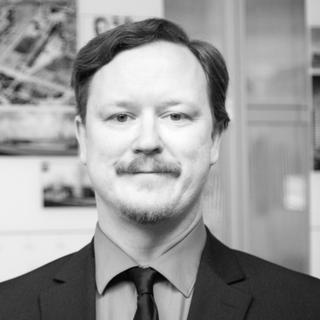Epstein provided DesignBuild services to help TAAG Genetics, a biotechnology company, achieve their goal of expanded U.S. capabilities.
TAAG Genetics develops, manufactures and distributes its genetic analysis products and services to companies in the clinical and industrial business sectors. The software and DNA testing solutions delivered by TAAG Genetics focus on the applications that multiplex PCR-based tests can have for clients, such as identifying multiple pathogens in food companies, agricultural and environmental areas, as well as providing accurate diagnostic tools for healthcare professionals such as COVID-19 testing and DNA sequencing, all empowered by artificial intelligence software for a robust and complete analysis. They are a leader in microbiological control, food safety, clinical diagnosis, and sequence data mining.
TAAG has operations in South America, Mexico, and the United States. Their current U.S. operations work primarily with contract laboratories to perform analysis and testing on samples collected by their clients. Their desire of expanded U.S. capabilities was to be able to include in-house operation of the laboratory component of their service offering. Therefore, TAAG Genetics purchased 8,660 square feet of space in St. Charles, IL and retained Epstein to converting approximately 4,000 square feet of warehouse space into a microbiological and clinical testing laboratory.
Epstein’s DesignBuild services included the design and construction of interior warehouse space fit-out to be used as a new testing laboratory for analyzing microbiologic samples for a variety of industries including food and agricultural producers as well as medical institutions. In addition to being a working laboratory, the space is also being used to demonstrate TAAG’s progressive approach to current and prospective customers. The lab needed to have an aesthetic that not only reflected TAAG’s business objectives, but could also be utilized as an efficient functional space.
Through early client meetings, it was evident the design aesthetic needed to have a cohesive look and feel. While there was opportunity for exploration and encouragement to do something different, Epstein’s team wanted to choose a theme to justify the design. With input and direction from Denis Berndt, TAAG Genetics' CEO, it was decided the space aim to be clean and open, yet homey.
The lab itself features the following spaces: receiving and media prep; sample storage and incubation; amplification; testing and processing; sterilization; and several ancillary and support areas. The lab also contains several clean rooms, one with positive air pressure and one with negative air pressure where the air is exhausted through the roof to the outside.
The theme of openness combined with the requirements of the program elements was challenging, particularly in a relatively small space. Detail modifications were required due to the limitations of the space and existing elements that could not be changed because of code and budget restraints.
Laura Petrocci, NCIDQ, IIDA, Epstein’s Design Professional, tackled the lab design, which features a high contrast color palette with bright pops of color and graphic elements to promote innovation and create a sleek, contemporary workspace. “Fractal patterns, molecular structures, and TAAG’s lively and modern branding style were all inspirations for the final design,” Laura noted.
This project also had a significant lighting component including a geometric design that keeps with those large design gestures in the small space by recalling abstract molecular diagrams, referring to the function of TAAG Genetics as a genetic material testing facility. Specifically, the overall character of the light fixtures’ shapes and configurations was carefully maintained, allowing it to reflect an overall geometrical vision. Special attention was then given to the arrangement of the light fixtures; hanging the main geometric fixture what challenging. The fixture itself covered approximately 40 feet by 40 feet. Locating the proper points to suspend the fixture from the ceiling, ensuring they did not conflict with existing sprinkler piping and mechanical system ductwork, and that it was structurally sound took enormous effort from the whole construction team. Our solution was to assemble the entire fixture on the ground and use laser pointers to identify the correct locations for mounting. At some locations, an intermediate structural grid needed to be erected to avoid the piping and ductwork conflicts. The fixture then needed to be hoisted as a single unit into place and leveled at the correct height to complete the space. The final layout is aesthetically pleasing, coordinates with TAAG’s operations, functional, and provides the required light levels to the below working surfaces. Automatic controls were utilized to comply with current energy codes and provide operational savings.
Epstein also provided MEP support including a new 225A, 208/120V, 3PH, 4W panelboard to power receptacles, equipment, lighting fixtures and exit signs located in the scope areas. Localized automatic lighting controls were added, in accordance with energy codes, as well as new fire alarm devices, which were connected to the existing fire alarm control panel.
One of the biggest challenges of the project was performing construction throughout COVID-19. The construction team was faced with significant supply chain issues as well as inconsistent man power. Construction managers and contractors worked closely with the design team to find creative solutions to these challenges. Adjustments were frequently made to help expedite materials or more efficiently install work without changing the overall design objectives.
The construction team also had to deal with some difficult existing conditions. Converting untidy warehouse and general office spaces into clean laboratory space was not easy. In one area, existing carpet needed to be removed and a highly cleanable floor surface installed. Unfortunately, the carpet had been glued to underlying concrete, and removing the adhesive and preparing the concrete to receive the new surface was particularly problematic.









